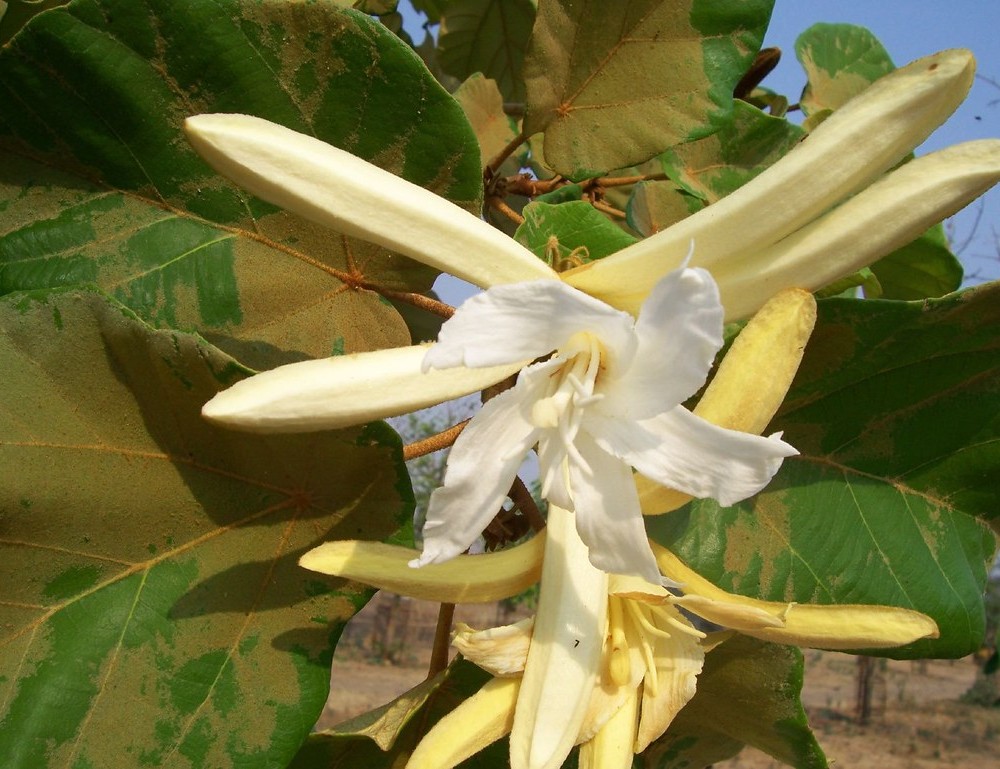Dinner Plate Tree
(Pterospermum diversifolium)

Description
Pterospermum acerifolium, the bayur tree or karnikara tree, is a flowering plant indigenous to Southeast Asia, from India to Burma. It is most likely to grow naturally along forested stream banks. The best growing conditions are a seasonally moist then dry climate with access to full sunlight. Pterospermum acerifolium is an angiosperm that is traditionally included in the family Sterculiaceae; however, it is grouped in the expanded family Malvaceae as well. The classification Pterospermum is based on two Greek words, Pteron and Sperma, meaning “winged seed” and the species name acerifolium indicates leaves shaped like a maple's. There is an array of common names for Pterospermum acerifolium, depending on the region where it is grown. It is commonly referred to as Kanak Champa, Muchakunda or Karnikar Tree within its native range. In the Philippines, it is known as Bayog. Other common names include Bayur Tree, Maple-Leafed Bayur Tree, and Dinner Plate Tree. It is a relatively a large tree, growing up to thirty meters tall. Mostly planted as an ornamental or shade tree, the leaves, flowers, and wood of a Bayur Tree can serve a variety of functions. The bark of the bayur tree is grey in color and is considered to be fairly soft. Small twigs and new growth can sometimes seem feathery and are commonly more of a rusty-brown color. The leaves of the tree are palmately ribbed and have stipules. The leaves grow in an alternate arrangement. Leaf shape can range from oblong, broadly obovate to ovate. Leaf edges are commonly dentate (toothed) or irregularly lobed. Many leaves tend to droop downward, giving the tree the appearance that it is wilting, when in fact it could have a sufficient amount of water available. The top side of the leaves is a dark green color with a glabrescent texture. The leaves are rough and rubbery to limit the loss of moisture in a hot climate. The leaves do not tear even on crumpling. The bottom side of the leaves range from a silver to rust color and are pubescent. Leaves have a peltate blade base, meaning the insertion of the petiole is at the center of the leaf. Pollen is spherical with spikes and approximately 60 microns in size.
Taxonomic tree:







